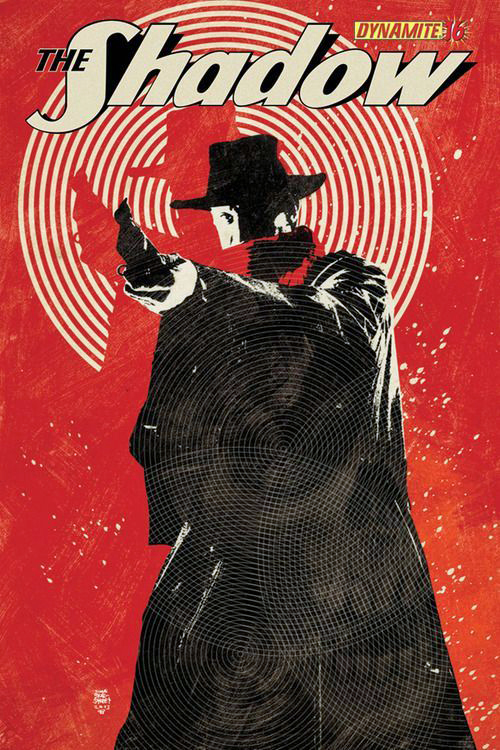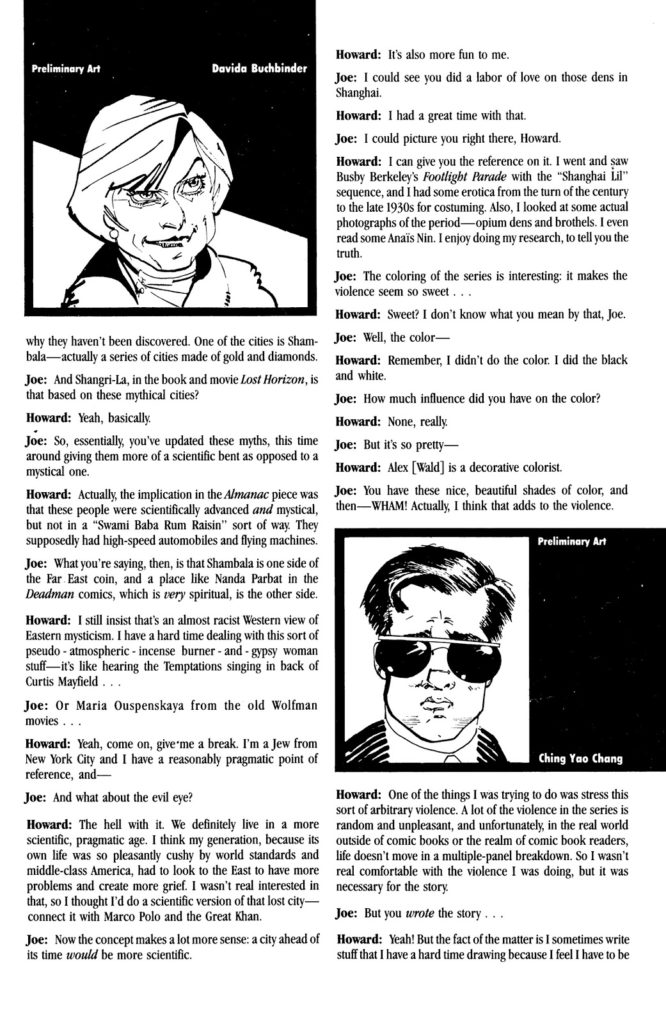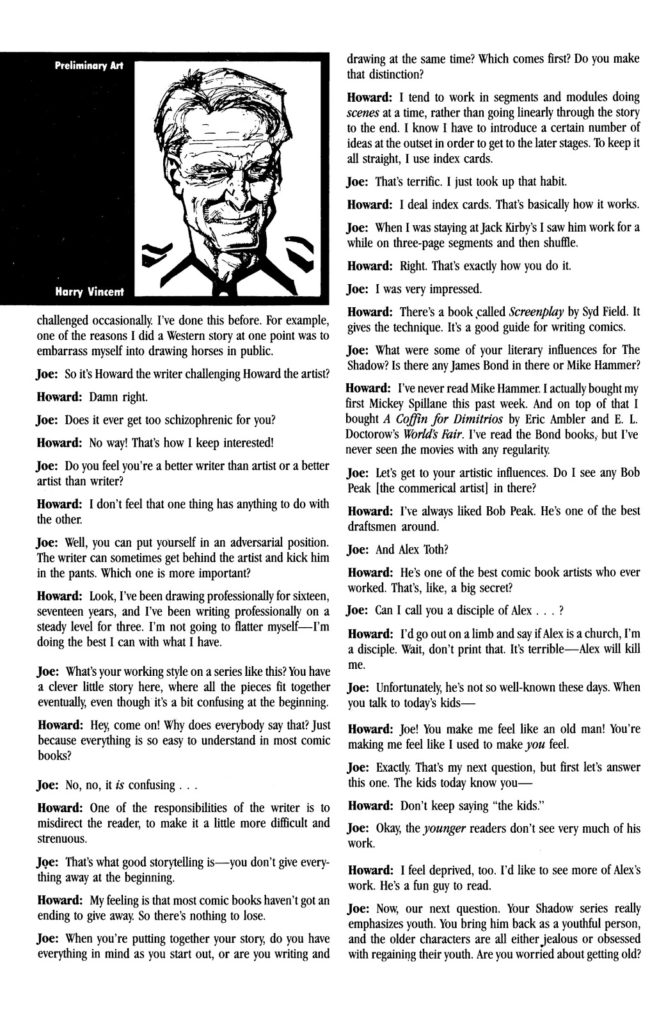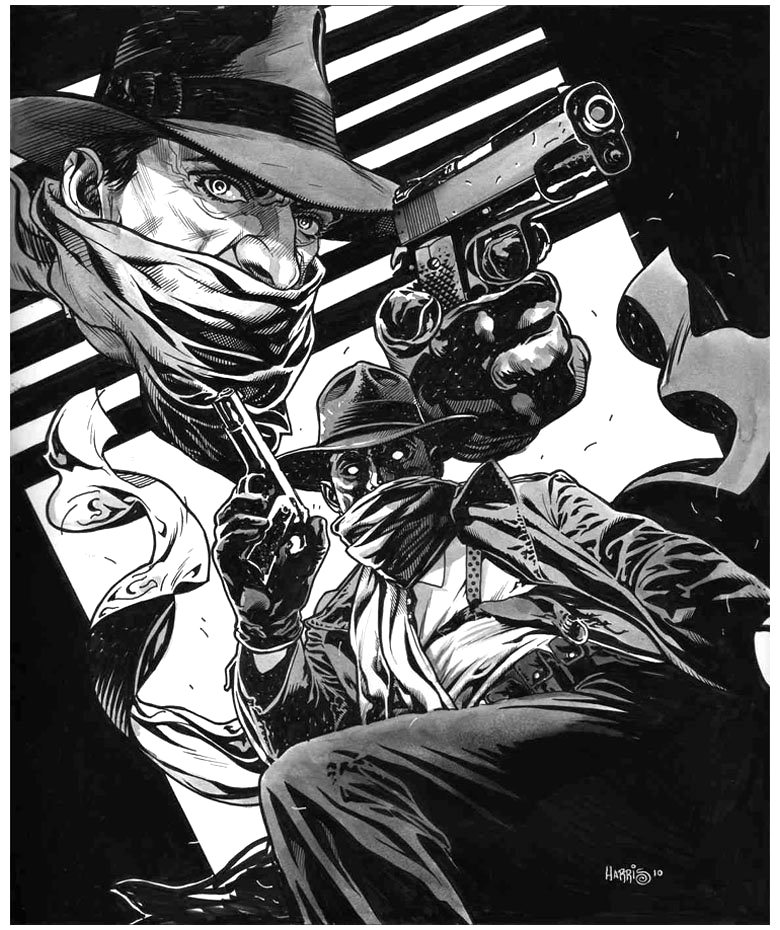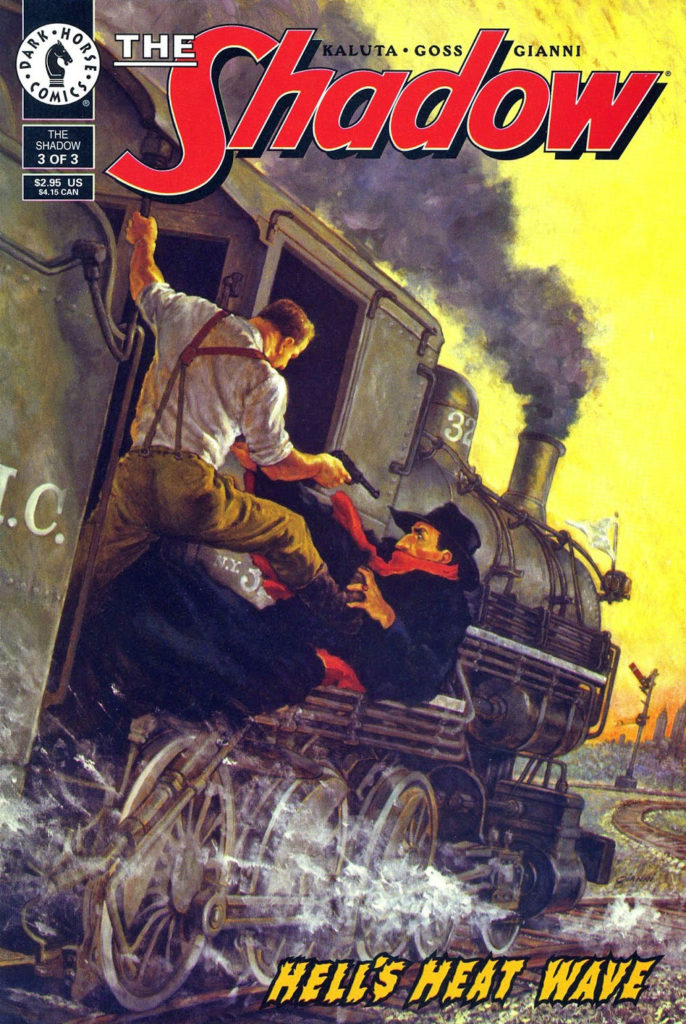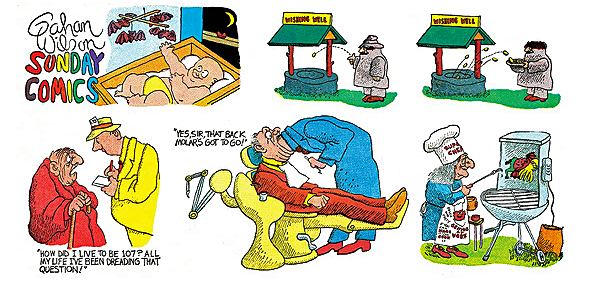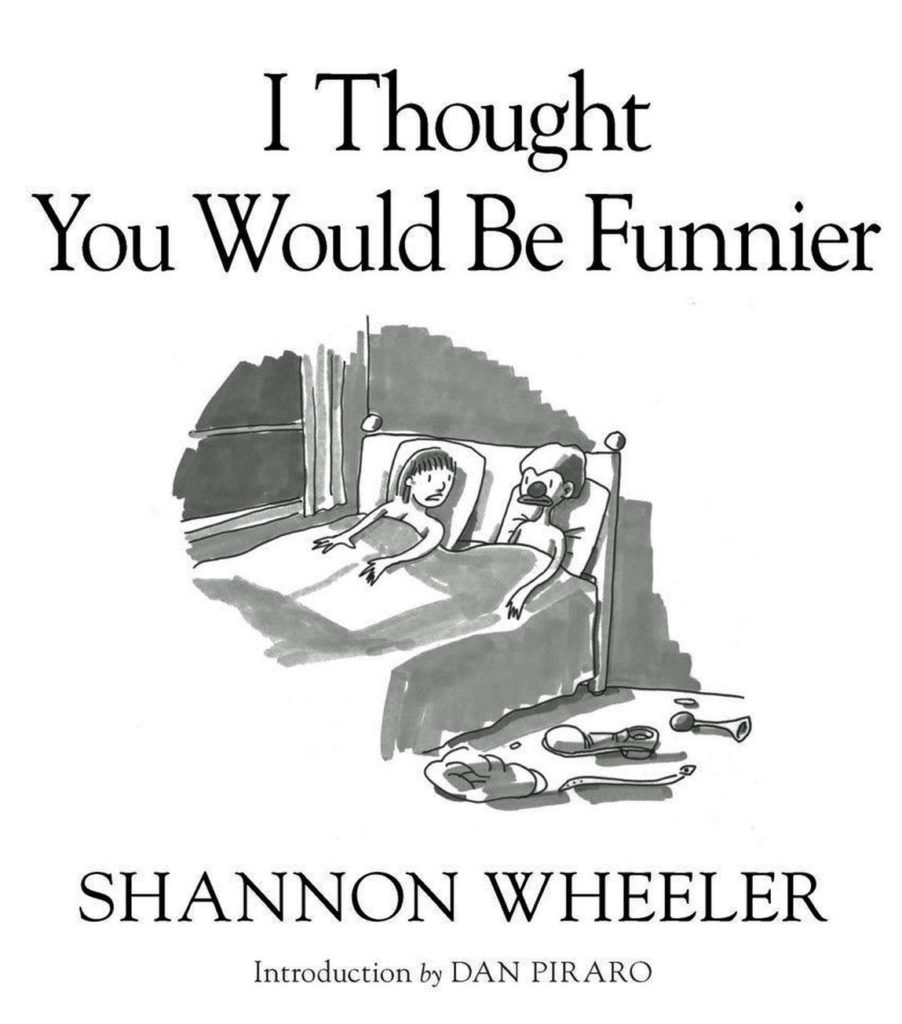Tim Bradstreet — Weapons Upgrade
The Shadow Now #4 January 2014, Alternative Cover
Tim Bradstreet delivers a great Shadow cover that was, ultimately, unused.
Why are some comic book covers re-worked?
Subjective question. Subjective answers.
If it’s a licensed title, as in the case of The Shadow, maybe the licensor doesn’t like it.
Editorial decision, perhaps? Certainly a logical answer in many cases. Possibly not a strong enough image to “sell” the issue. Or perhaps the content doesn’t quite match the interior content.
And, in some cases, the artist himself finishes the piece and decides he doesn’t like it. Both Jim Steranko and Neal Adams have told me they’ve finished covers, changed their minds, and started from scratch.
That seems reasonable, even if time consuming. If your signature is going on the piece, you might re-think something you personally don’t like. Especially if you’re going to have to look at it — forever.
And in a pre-digital age, physical covers were lost occasionally. Trust me, it happened.
Whatever happened here –– definitely not the final possibility, of course — I think the unpublished version is cool. The puzzle pieces, skull included, are a nice touch. The published cover drops them in favor of a larger, more dramatic Shadow pose.
Bradstreet, of course, is a great choice for Shadow covers. Can’t go wrong, and for my two cents, I don’t think there’s anything wrong at all here.





